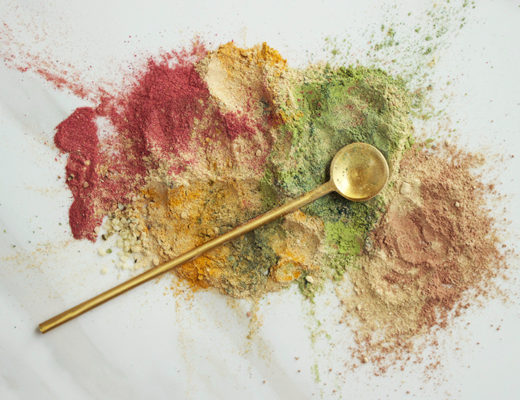For most of my adult life, I’ve experienced gas, bloating, and overall stomach discomfort after eating. After a dinner out I would sit uncomfortably bloated, in tremendous pain.
For now, I’m savoring having a relatively normal digestive system for the first time in my adult life.
For years, I wondered why. After doing Whole30 (a monthlong elimination diet) at the age of 25, I self-diagnosed myself with dairy and gluten sensitivity. I cut out cow’s milk, but I didn’t give up my love of cheese instead ping for aged or non cow cheese. I then started eating everything gluten free (cue more bloating).
Getting serious about my gut health
After a few months of this, I made an appointment with my primary care physician. I was concerned because I’d noticed an increase in bloating and gassiness, even when I didn’t eat dairy. I’d also had a few bouts of constipation lasting longer than I would have liked, and with rising rates of colon cancer among young adults, I wanted to be extra safe. My doctor referred me to a gastroenterologist, and after a three-month wait, I finally went in for my appointment.
Following a long intake process that included answering some relatively embarrassing questions about my bowel habits, my gastroenterologist did bloodwork, an ultrasound, and a breath test, and finally concluded that I had small intestinal bacterial overgrowth, or SIBO.
Turns out, there really was something going on in my gut.
What the heck is SIBO?
As the name suggests, SIBO happens when there’s an overgrowth of bacteria in the small intestine. Trillions of bacteria and other microbes naturally hang out in our digestive tracts (aka, the gut microbiome), says Andrew Boxer, MD, a board-certified gastroenterologist with Gastroenterology Associates of New Jersey, and these tiny bugs help us digest the food we eat, among other things. But too much bacteria in the small intestine (and more specifically, bacteria that has no business posting up there) can trigger symptoms like bloating, indigestion, diarrhea OR constipation and abdominal pain (hello, it me).
“The most common symptom of SIBO is bloating, especially bloating that gets progressively worse throughout the day, leaving someone feeling distended and uncomfortable at the end of the day,” says Abigail Hueber, RD, LDN, functional dietitian and founder of Above Health Nutrition.
It doesn’t look the same for everyone, though, Hueber notes. “SIBO can present as either diarrhea or constipation or even have someone oscillating between both,” she says.
Because these symptoms aren’t super specific and often can be confused with other conditions (like irritable bowel syndrome, or IBS) or even food intolerances (yep, including a dairy intolerance), Dr. Boxer says people typically suffer for years and see multiple doctors before a diagnosis is ever made.
It was confusing to learn I had a condition I had never heard of before, but apparently that’s par for the course with SIBO. Dr. Boxer says SIBO is more common than we’ve realized in the past. “Traditionally, we thought that only patients with mixed connective tissue disorders such as scleroderma get this disorder,” he says. “The more we learn, the more we see that there are many reasons to have it.”
Indeed, SIBO often occurs when something—like surgery, illness, or even a chronic condition like diabetes—causes food and waste products to move more slowly through the digestive tract, which in turn creates a breeding ground for bacteria, per the Mayo Clinic. It can also come about from long-term use or overuse of meds like antacids, proton pump inhibitors, antibiotics, or narcotics, per the Cleveland Clinic. And that’s not an exhaustive list by any means.
The SIBO-gas connection
From our first conversation, my gastroenterologist was fairly certain I had SIBO. However, he wanted to be extra cautious, so he recommended I do bloodwork and an abdominal ultrasound to check for any suspicious or problematic growths or abnormalities. Luckily, everything came back clean and normal, so we moved on to a breath test.
Breath testing is a non-invasive process that involves measuring the concentration of gasses—hydrogen, methane, and more recently, hydrogen sulfide—in the breath after consuming a specific amount of a carbohydrate, such as glucose or lactulose. This method indirectly suggests the presence of an excessive bacterial population in the small intestine by detecting gas produced from the fermentation of the ingested carbohydrate by gut bacteria. This gas is then exhaled through the lungs.
It wasn’t dairy or gluten causing my bloating —it was garlic and bananas, two foods I had eaten on a near-daily basis for the majority of my life.
Discovering my SIBO triggers
As with most medical conditions, there’s no shortage of information on the internet about how to treat SIBO symptoms. There are massive Facebook groups with 50K+ members where people share everything they’ve tried to manage their stomach upset and prevent flare-ups. After reading through so many of these, I felt surprisingly grateful: I had a relatively mild case of SIBO. My everyday life wasn’t interrupted; I could function, work, and exercise, and my flare-ups, while uncomfortable, were mostly tolerable.
There are so many ways to treat SIBO—from cutting out entire food groups to using herbal remedies—but I followed the treatment plan recommended by my gastroenterologist, which started with taking an intense course of antibiotics to essentially “clean out” my gut. My bloating subsided after my two-week course of Xifaxan, and I didn’t experience any side effects.
Afterward, though, the most challenging part of navigating my SIBO diagnosis began: figuring out which foods were responsible for my symptoms. Though I was sure dairy was to blame, this turned out not to be the case.
SIBO symptoms can flare when specific foods “feed” the overgrown bacteria in the GI system. What makes SIBO difficult to figure out is that seemingly ordinary foods that are considered healthy can be the culprit. For most people, these are high-FODMAP foods—that is, foods high in certain fermentable carbs or sugars, such as apples, mangoes, pears, garlic, onions, cauliflower, and kidney beans.
To determine my triggers, I followed a low-FODMAP diet, where I avoided all high-FODMAP foods for a month and then gradually added them back in, one at a time, while keeping tabs on my symptoms. You can identify which foods are causing your flare-up of symptoms by keeping a detailed food diary, including any symptoms you experience, to pinpoint specific foods and identify patterns over time.
(It’s important to note that a low-FODMAP diet isn’t right for everyone, and it’s best to work with a doctor or dietitian when trying it to avoid nutritional deficiencies or even worsened GI issues.)
This is how I discovered it wasn’t dairy causing my bloating and gas—it was garlic and bananas, two foods I had eaten on a near-daily basis for the majority of my life. Often, I would add garlic to my morning eggs and then have bananas and almond butter after my run. It never occurred to me these healthy foods could be the reason behind my discomfort.
Embracing life with SIBO
For almost a year now, I’ve cut garlic and bananas from my diet, and I don’t have any of the old symptoms I used to have . At the recommendation of my gastroenterologist, I’ve also eliminated probiotics and kombucha-style beverages. As he explained to me, if you have SIBO, you already have more bacteria than you need, so adding more through supplements or drinks could make symptoms worse.
The downfall, of course, is not being able to eat some of the foods I love. While some people with SIBO can add trigger foods back into their diet over time, I notice extreme bloating when I eat even a tiny bit of garlic (which is in so many delicious dishes!), so for now, I’m avoiding it. I do take comfort in knowing that many people with SIBO experience these garlic-derived symptoms, since it’s a common culprit. As for bananas? Ayoob says I may be able to enjoy overripe bananas (when they have brown spots on their peel), because the fruit’s carbohydrate content decreases over time. I’m not brave enough to try it, but I’ll report back if I do.
For now, I’m savoring having a relatively normal digestive system for the first time in my adult life.






No Comments